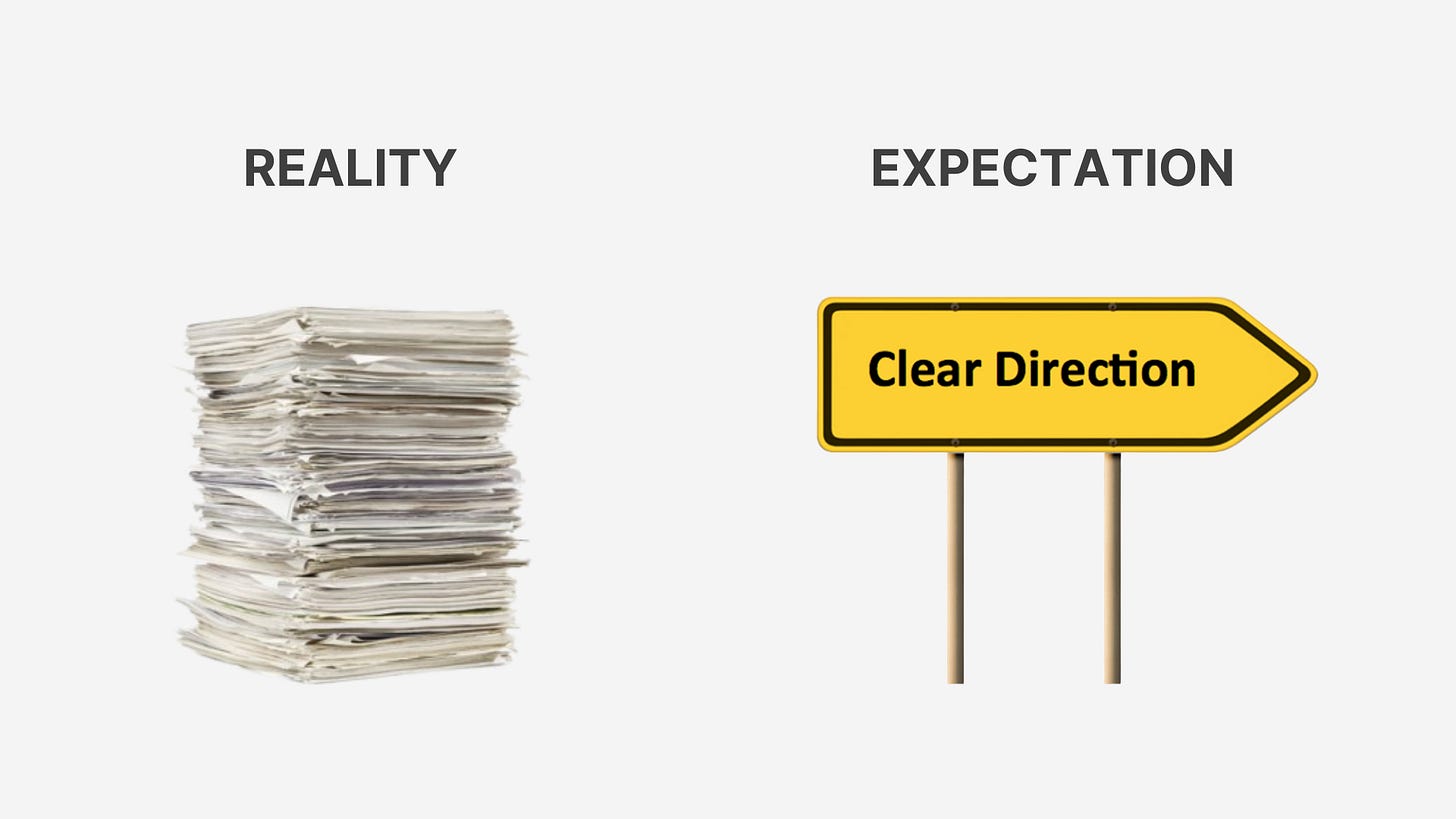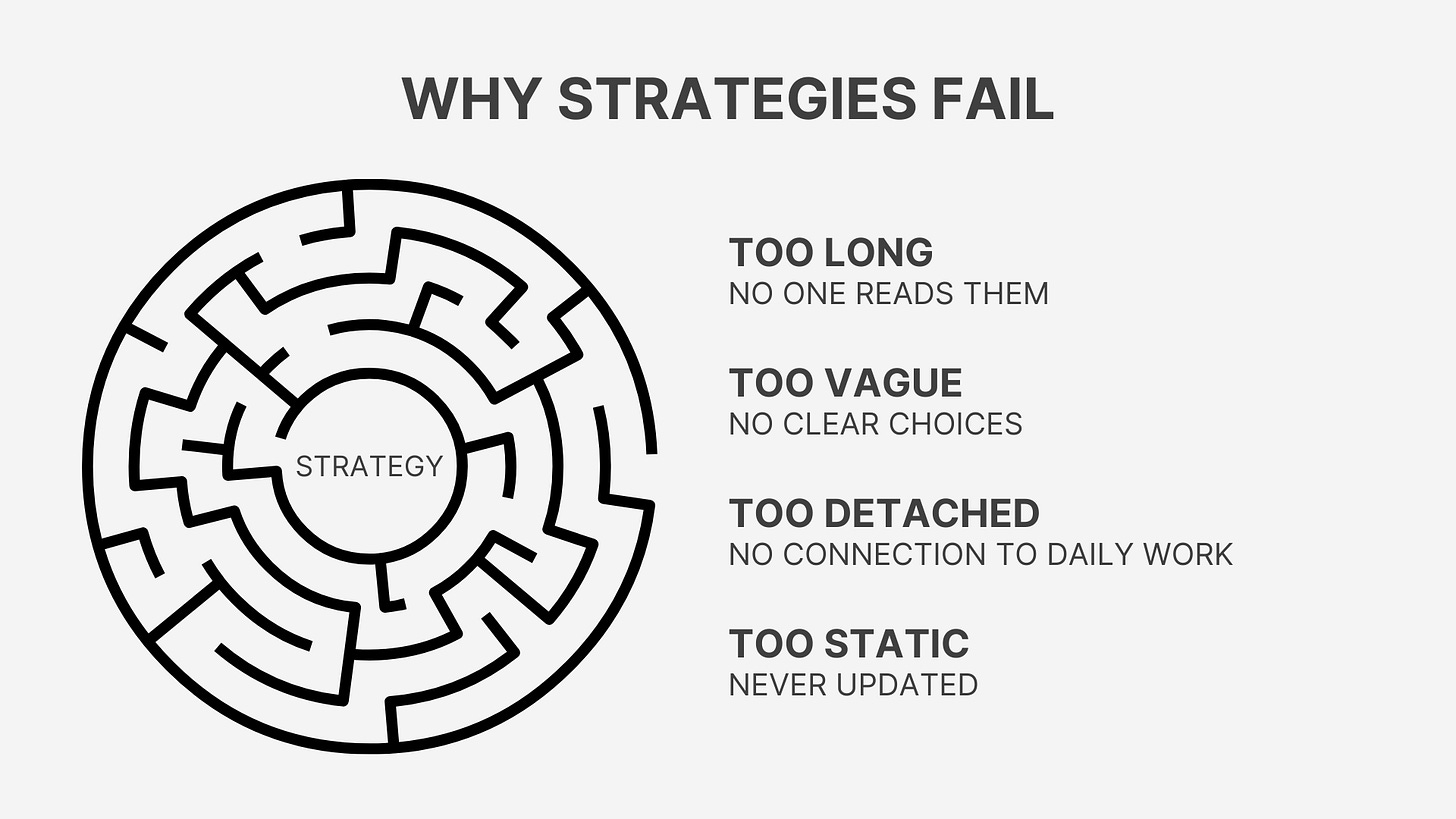The 2025 Product Strategy Playbook
Product strategy has changed - and if you're using an outdated playbook, you'll be missing out. Here's how to build your product strategy in the AI age
I gave the keynote at Northeastern’s Product Management conference today:
For the full talk track and PDF, subscribe:
It’s a harsh truth. But most of the product strategies out there are worth less than the paper they’re printed on.
But we’re facing a new reality with respect to the role PMs can play in the product development process.
Modern AI prototyping tools like Replit, Cursor, v0, Bolt, and Lovable are enabling PMs to not just design but code fully functioning prototypes with simple text prompts.
That’s not the only way AI is changing strategy. AI is also doing three things:
It’s making designers and engineers more efficient -
Each individual builder has more leverage than ever - which means they need better strategic direction on what to build
And it also means those strategies need to adapt and be malleable - they can’t be rigid feature lists in this age, they need to be high level problem and outcome direction
Having empowered teams that are going in the right direction matters more than ever - and PMs need to plug that gap with great strategy built for this era
PMs are able to get closer and closer to the product -
PMs can iterate on product copy with AI to improve the copy
PMs can build AI prototypes for new features that are even the first version into production
PMs can build AI evals that determine the future of the product
AI still can’t develop a great strategy -
AI lacks the context of a PM - what worked before, all the 1000s of documents and customer calls can’t fit in its context window
AI can’t do the rounds and rounds of iterations with stakeholders and customers that a truly hardened and well-accepted strategy can
This makes product strategy more important than ever as a task for PMs and product leaders.
A few other things have happened that make 2025 a unique time for strategy—a time where, if you use the outdated advice, you’re likely for failure.
Static ➜ Continuous iteration: you’re not going to just set and forget a strategy for 2-5 years, things like new AI tools are going to disrupt you way faster than that
Documentation-driven ➜ Visualization first: the era of the long document is over, now people expect visuals like videos and prototypes
Annual cycles ➜ Data informed: as teams learn new things from incremental releases, they need to be able to adapt to the new data
Given how much things have changed in the past few years, I thought I needed to write a complete guide to product strategy that actually works in this era.
The kicker? You’ll be able to write your first draft in less time than it takes to watch a movie.
So let’s get into it.
Let’s start with the base reality. I talk to a few PMs each and every single day. It’s my user discovery process. And I often ask:
“What does your product strategy look like?” ➜ Most people still say a document
“And what is the goal of that strategy?” ➜ Most people say clear direction
“And do you have clear direction?” ➜ Most people say no
The problem is, there’s just no content to break away from this reality! That’s why people keep using the same old frameworks they have been.
I call this “The Strategy Crisis.” And I really do think it’s a crisis. As PMs, product leaders, and product builders, we’re drowning in documents.
But, we’re still starving for direction.
This is a pretty big problem. Because product teams are expensive. Let’s do the math on a typical product team in the United States:
5 engineers x $200K = $1M
1 product designer x $180K = $180K
1 product manager x $190K = $190K
That’s a total cost of $1.37M to maintain the team
And this doesn’t even include the percentages of time of the leadership that are going to the team. So all in, it’s closer to $1.5M/year.
And if you have a bigger team? Like 10 engineers? The cost balloons to $2.5M.
So product teams are really expensive. You need to get a return on that investment.
That’s part of the job of the product manager, and the product strategy is perhaps the highest leverage thing to influence that ROI.
Unfortunately, most strategies fail for one or two of four very predictable reasons:
They’re too long - so no one reads them
They’re too vague - so there are no clear decisions being made
They’re too detached - there’s no connection to the daily work people do
They’re too static - they aren’t updated as the teams learn new things from shipping new things
The fact is: great strategies are simple. Today, I’ll help you build a great, simple strategy. I’ll show you how you can go from a stack of documents to visiontypes that resonate with people.
Keep reading with a 7-day free trial
Subscribe to Product Growth to keep reading this post and get 7 days of free access to the full post archives.











